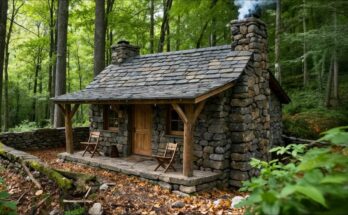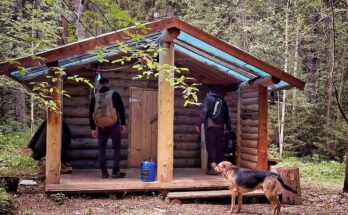Deep in the wilderness, far from civilization’s noise, a secret bushcraft cabin offers both refuge and self-reliance. Building such a shelter is not only about craftsmanship—it’s about understanding nature and creating a space that ensures survival. Every log, joint, and shingle must serve a purpose, combining functionality with stealth and sustainability.
The foundation of a bushcraft cabin begins with careful site selection. A hidden location near a reliable water source, yet elevated enough to avoid flooding, is ideal. Using natural materials from the surrounding forest—fallen logs, stones, and clay—helps the cabin blend seamlessly into its environment. Hand tools like axes, saws, and drawknives are sufficient for construction, reinforcing the principle of minimalism and resourcefulness. Walls built with notched logs offer insulation and structural strength, while a low profile roof made of bark or sod camouflages the cabin from above.
Inside, simplicity rules. A raised bed platform, storage shelves, and a small workbench can all be fashioned from timber. Yet, the true heart of the cabin is the wood stove—an essential element for warmth, cooking, and comfort. A properly installed stove ensures efficient heating during freezing nights and reduces smoke signature, vital for a secret shelter. Stones placed around the stove absorb and radiate heat long after the fire dies down.
Safety and ventilation are crucial. A well-sealed flue and small air vent prevent carbon monoxide buildup, while the chimney’s exterior should be masked to avoid revealing smoke trails. With the stove glowing softly and the forest whispering outside, the cabin becomes more than a survival shelter—it’s a testament to human adaptability and harmony with nature. Building a secret bushcraft cabin is not just about survival; it’s about reclaiming independence and rediscovering peace in the wild.


